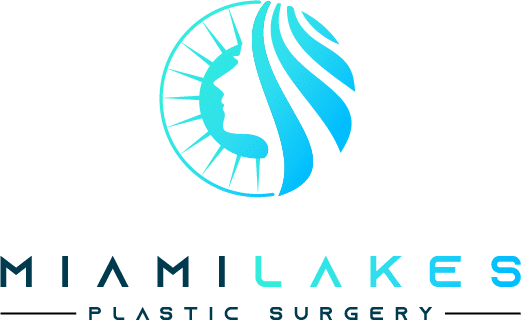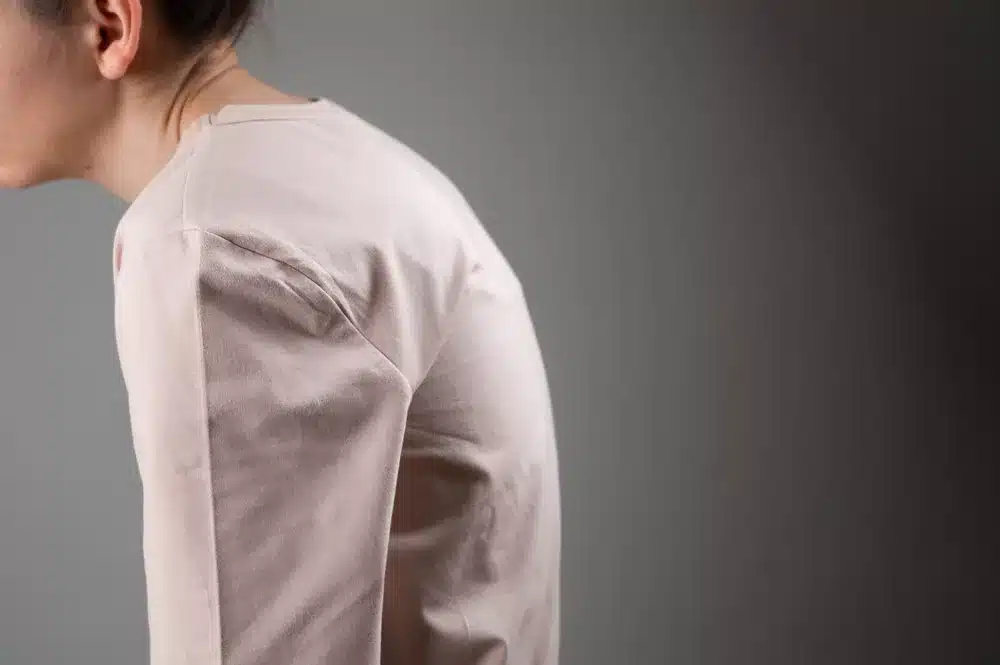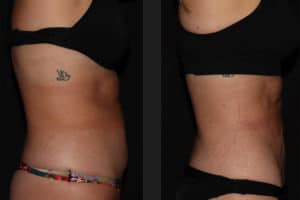Buffalo hump refers to the excessive accumulation of fat on the up per back and neck area, creating a hump-like appearance. While surgery, such as liposuction, is a common approach for Buffalo hump removal, there are effective non-surgical alternatives available.
Invest in yourself with our special offer – Buffalo Hump Removal at Miami Lakes Plastic Surgery for just $2800!
Non-Surgical Methods for Buffalo Hump Removal
Buffalo hump refers to the accumulation of excess fat on the upper back and neck, resulting in a hump-like appearance. While surgical interventions are often used for buffalo hump removal, there are non-surgical methods that can help reduce its prominence. Here are some non-surgical approaches to consider:
- Lifestyle Modifications: Adopting a healthy lifestyle can contribute to overall weight loss and reduction of fat deposits, including the buffalo hump. Focus on maintaining a balanced diet that is low in calories and saturated fats. Engage in regular exercise, including cardiovascular activities and strength training, to promote weight loss and improve muscle tone.
- Posture Correction: Pay attention to your posture and make a conscious effort to maintain a straight spine and avoid slouching. Practicing good posture can help minimize the appearance of the buffalo hump.
- Targeted Exercises: Performing exercises that specifically target the muscles in the upper back and neck can help strengthen and tone these areas, potentially reducing the prominence of the buffalo hump.
- Weight Loss Programs: If the buffalo hump is associated with excess body weight, participating in a structured weight loss program can be beneficial. These programs typically include a combination of dietary modifications, physical activity, and behavioral support to help you achieve and maintain a healthy weight.
- Injection Treatments: Certain injectable treatments, such as deoxycholic acid (Kybella), have been used off-label for reducing fat deposits. Kybella injections can help break down fat cells and may be considered as a non-surgical option for buffalo hump reduction.
While non-surgical methods can provide some improvement in the appearance of the buffalo hump, it’s important to note that the extent of reduction may vary depending on individual factors. Additionally, these methods may not be as effective as surgical interventions for significant or stubborn cases of buffalo hump.
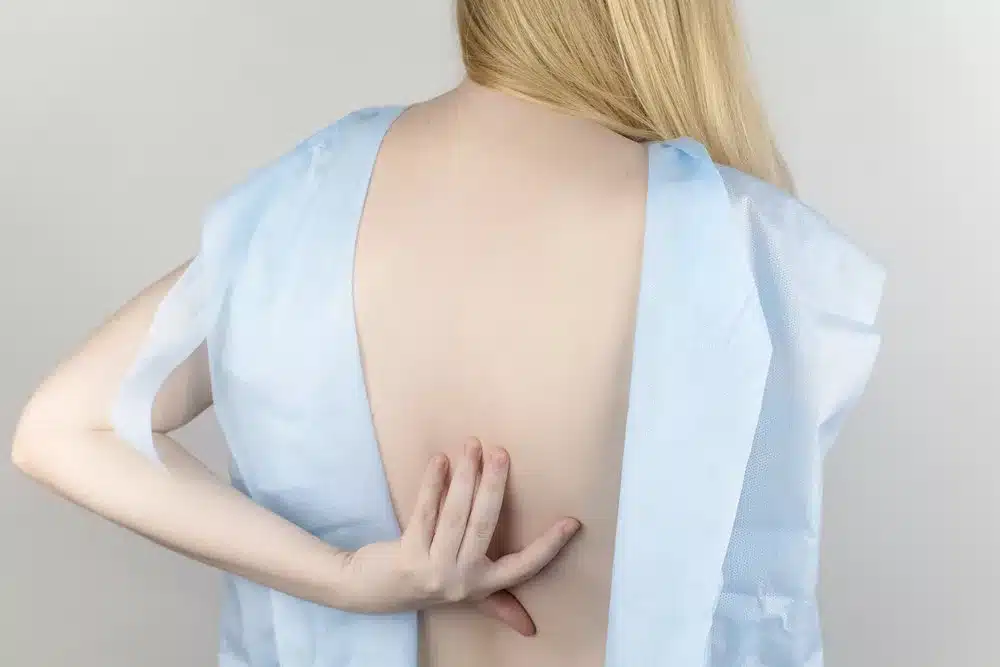
Lifestyle Changes and Exercise
Lifestyle Changes and Exercise
One of the primary non-surgical methods for buffalo hump removal involves making certain lifestyle changes and incorporating regular exercise into your routine. These changes can contribute to overall weight loss and reduction of excess fat in the upper back and neck area.
- Healthy diet and weight loss: Adopting a healthy and balanced diet is crucial in reducing fat accumulation. Focus on consuming nutrient-dense foods, such as fruits, vegetables, lean proteins, and whole grains. Avoid processed foods, sugary beverages, and high-fat foods. Incorporate portion control and mindful eating to maintain a calorie deficit, which can aid in shedding excess weight and fat, including the buffalo hump.
- Regular exercise and physical activity: Engaging in regular exercise and physical activity can help burn calories, increase metabolism, and promote fat loss throughout the body. Include cardiovascular exercises like jogging, cycling, or swimming to elevate heart rate and promote overall weight loss. Strength training exercises, such as weightlifting or resistance training, can help tone the muscles in the upper back and neck, providing a more sculpted appearance.
- Posture correction and stretching exercises: Poor posture can contribute to the prominence of the buffalo hump. Practice good posture by keeping your shoulders back, chin up, and spine aligned. Incorporate stretching exercises that target the neck, upper back, and shoulders to improve flexibility, relieve tension, and correct posture. Regular stretching can also help reduce the appearance of the buffalo hump.
By adopting a healthy lifestyle, making dietary changes, and incorporating regular exercise and stretching into your routine, you can contribute to the reduction of the buffalo hump without the need for surgical intervention.
Medications for Underlying Conditions
In some cases, certain medications may be prescribed as part of non-surgical treatment options for buffalo hump removal. These medications aim to address underlying hormonal imbalances, reduce inflammation, or promote fat reduction.
- Hormone therapy: In situations where hormonal imbalances contribute to the development of a buffalo hump, hormone therapy may be recommended. This approach involves the use of specific medications or hormone replacements to restore hormonal balance and potentially reduce the size of the fat pad.
- Anti-inflammatory drugs: Anti-inflammatory medications, such as non-steroidal anti-inflammatory drugs (NSAIDs), may be prescribed to alleviate inflammation associated with the buffalo hump. These medications can help reduce discomfort and swelling in the affected area.
- Fat reduction injections: Another non-surgical method for buffalo hump removal involves the use of fat reduction injections. These injections typically contain substances that help break down and eliminate fat cells in the treated area. This approach can lead to a reduction in the size of the buffalo hump over time.
It’s important to consult with a healthcare professional to determine the most suitable medication options based on individual circumstances and medical history.
Injections and Lipolysis
In addition to lifestyle changes and non-surgical devices, there are specific non-surgical methods that focus on targeted fat reduction in the buffalo hump area. These methods include injections and lipolysis techniques.
- Fat reduction injections: Fat reduction injections, such as lipolytic injections, are commonly used to target and dissolve fat cells in the buffalo hump. These injections contain substances, such as deoxycholic acid or phosphatidylcholine, which break down and metabolize the fat cells. The dissolved fat is then naturally eliminated by the body’s lymphatic system over time. Multiple treatment sessions may be required to achieve optimal results.
- Lipolysis techniques: Lipolysis refers to the breakdown or destruction of fat cells. Non-surgical lipolysis techniques, such as laser lipolysis or ultrasound-assisted lipolysis, can be used to specifically target and reduce fat in the buffalo hump area. These techniques utilize laser or ultrasound energy to disrupt the fat cells, causing them to rupture. The body then eliminates the released fat through its natural metabolic processes. Lipolysis treatments typically require several sessions for noticeable results.
Both fat reduction injections and lipolysis techniques offer non-invasive alternatives to surgical procedures for reducing the size and prominence of the buffalo hump. These methods are generally safe and effective, but it is essential to consult with a qualified healthcare professional to determine the most suitable option based on individual needs and medical considerations.
Non-Surgical Treatments for Fat Reduction
Excess fat accumulation in certain areas of the body, such as the abdomen, thighs, or buffalo hump, can be a concern for many individuals. While surgical procedures like liposuction are commonly known for fat reduction, there are also non-surgical treatments available that can effectively target and reduce unwanted fat. These non-surgical options provide a less invasive alternative with minimal downtime and fewer risks. Let’s explore some of the popular non-surgical treatments for fat reduction:
- Cryolipolysis (CoolSculpting): Cryolipolysis is a non-surgical fat reduction treatment that uses controlled cooling to freeze and destroy fat cells. The procedure selectively targets the fat cells without damaging the surrounding tissues. Over the following weeks and months, the body naturally eliminates the destroyed fat cells, resulting in a more sculpted appearance. Cryolipolysis is commonly used for treating areas like the abdomen, flanks, thighs, and even the buffalo hump.
- Radiofrequency Fat Reduction: Radiofrequency (RF) treatments utilize energy waves to heat and disrupt fat cells. The RF energy increases the temperature in the targeted area, causing the fat cells to break down and eventually be eliminated by the body. These treatments also stimulate collagen production, leading to firmer and tighter skin. Radiofrequency fat reduction is effective for reducing localized fat deposits in various areas, including the abdomen, thighs, buttocks, and buffalo hump.
- Laser Lipolysis: Laser lipolysis is a non-surgical procedure that involves using laser energy to liquefy and remove fat cells. During the treatment, a laser fiber is inserted through small incisions, and the laser energy is delivered directly to the fat deposits. The liquefied fat is then gently suctioned out or naturally eliminated by the body. Laser lipolysis not only reduces fat but also encourages collagen production, resulting in improved skin tightening. This treatment can be used on multiple body areas, including the abdomen, hips, thighs, and buffalo hump.
- Injection Lipolysis (Kybella): Injection lipolysis, commonly known as Kybella, is a non-surgical treatment specifically designed for reducing submental fat, also known as a double chin. The treatment involves injecting a synthetic form of deoxycholic acid into the targeted area, which helps break down and destroy fat cells. Over time, the body naturally processes and eliminates the fat, resulting in a more defined jawline and improved neck contour.
- Ultrasound-Assisted Lipolysis: Ultrasound-assisted lipolysis is a non-surgical fat reduction technique that utilizes focused ultrasound energy to target and break down fat cells. The ultrasound waves selectively disrupt the fat cells while leaving surrounding tissues unharmed. The destroyed fat cells are then metabolized and eliminated by the body. This treatment can effectively reduce localized fat deposits in various areas, including the abdomen, flanks, thighs, and buffalo hump.
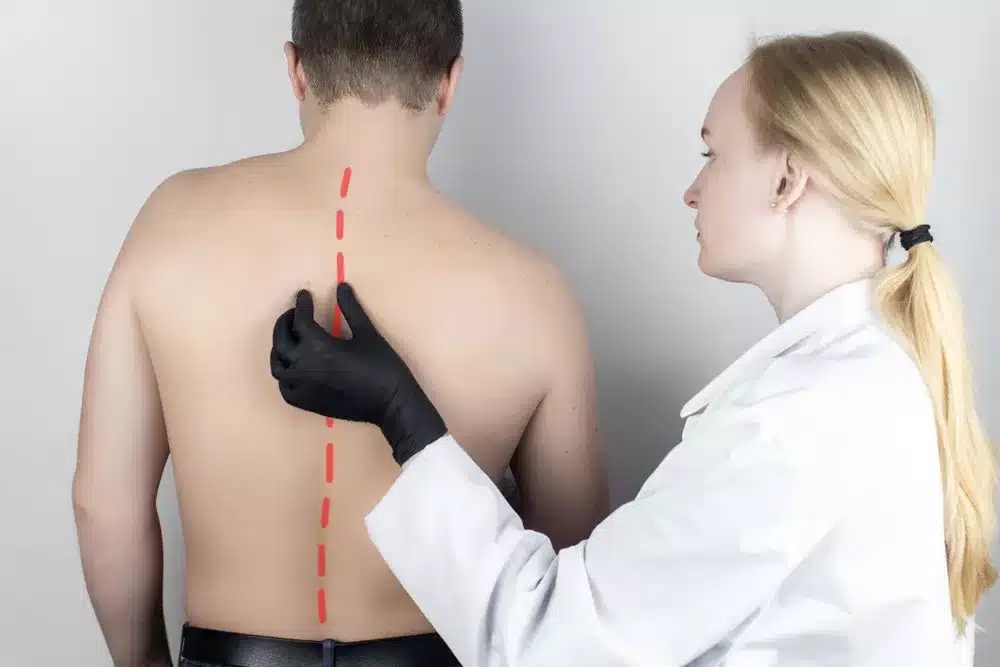
It’s important to note that while these non-surgical treatments offer effective fat reduction, they may not be suitable for everyone. Consulting with a qualified healthcare professional is essential to determine the most appropriate treatment based on individual needs, goals, and medical considerations.
What is Buffalo Hump?
Buffalo hump, medically known as dorsocervical fat pad, is a term used to describe the abnormal accumulation of fat on the upper back, particularly at the base of the neck and between the shoulders. This condition leads to a noticeable hump-like protrusion, resembling the hump seen on the back of a buffalo, hence the name.
The buffalo hump can vary in size and prominence, ranging from a small bump to a more significant fat deposit. It is often associated with certain medical conditions and lifestyle factors. Here are some common causes of buffalo hump:
- Excess Weight or Obesity: Buffalo hump can occur in individuals who are overweight or obese. Excessive fat deposits in the upper back area can contribute to the development of this hump-like appearance.
- Cushing’s Syndrome: Cushing’s syndrome is a hormonal disorder characterized by high levels of cortisol in the body. This condition can lead to fat redistribution, causing fat accumulation in specific areas, including the upper back.
- Long-Term Use of Steroids: Prolonged use of corticosteroid medications, such as prednisone, can result in the development of buffalo hump. Steroids can disrupt fat metabolism and lead to fat accumulation in certain regions of the body, including the upper back.
- HIV and Lipodystrophy: People living with HIV may develop a condition called lipodystrophy, which involves changes in fat distribution throughout the body. Buffalo hump can be one of the manifestations of lipodystrophy in individuals with HIV.
- Genetic Predisposition: Some individuals may have a genetic predisposition to accumulate fat in the upper back region, leading to the formation of a buffalo hump.
Buffalo hump can cause physical discomfort, limited mobility, and emotional distress for affected individuals. It may affect their self-esteem and body image. Fortunately, there are various treatment options available, both surgical and non-surgical, to address and reduce the prominence of the buffalo hump.
Causes and Associated Conditions of Buffalo Hump
Buffalo hump, characterized by the abnormal accumulation of fat on the upper back, can be associated with various underlying causes and medical conditions. Understanding these causes is essential for proper diagnosis and treatment. Here are the common causes and associated conditions related to buffalo hump:
- Excess Weight or Obesity: Buffalo hump can develop as a result of excess weight or obesity. When a person carries excess body fat, it can accumulate in the upper back region, leading to the formation of a hump-like appearance.
- Cushing’s Syndrome: Cushing’s syndrome is a hormonal disorder caused by prolonged exposure to high levels of the hormone cortisol. In this condition, the body’s cortisol production is disrupted, leading to fat redistribution. Fat tends to accumulate in specific areas, including the upper back, resulting in a buffalo hump.
- Long-term Steroid Use: Prolonged use of corticosteroid medications, such as prednisone, can cause buffalo hump. Steroids interfere with fat metabolism, leading to fat redistribution and accumulation in certain regions of the body, including the upper back.
- HIV-Associated Lipodystrophy: Lipodystrophy refers to abnormal fat distribution in the body. Some individuals with HIV may develop lipodystrophy as a side effect of antiretroviral therapy. Buffalo hump can be a manifestation of lipodystrophy in these cases.
- Genetic Predisposition: Some individuals may have a genetic predisposition to accumulate fat in the upper back area, making them more prone to developing a buffalo hump.
References:
- Verywell Health. “Buffalo Hump: Exercises, Treatments, and More.” Accessed March 8, 2023.
- Medical News Today. “Buffalo Hump: Treatment and Exercises.” Accessed February 3, 2023.
